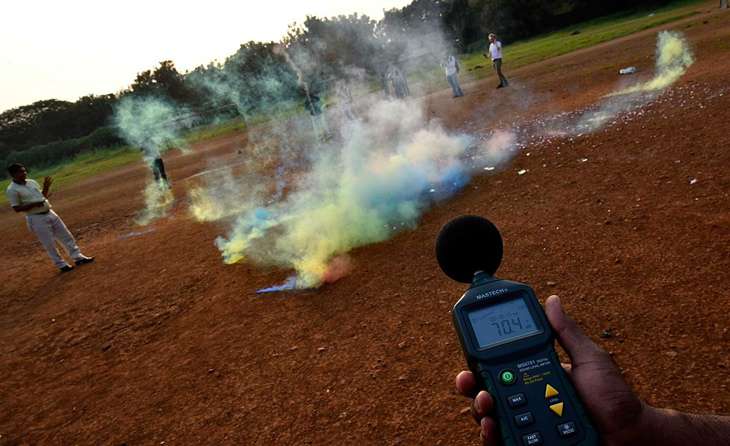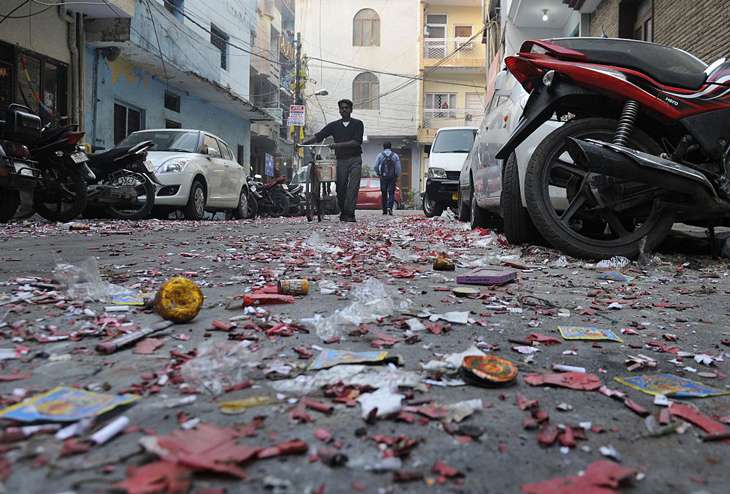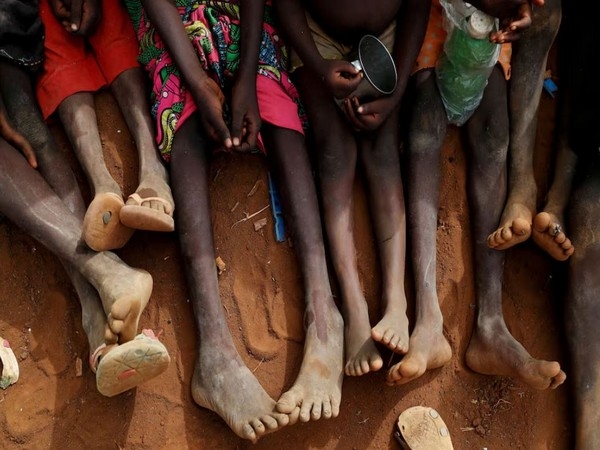Enjoyed your Diwali fireworks? Here's what's gone into your lungs

As autumn turns to winter, the air over New Delhi and most of north India is already toxic. Super fine particles - from diesel engines, from burning crop stalks, and dust - remain suspended in the chilly air in amounts nearly 10 times safe limits.
Diwali adds a whole new twist to this deadly mix. Firecrackers are made from metals and other chemicals. These emit fumes that are deadlier than the usual pollutants. While the PM causes lung and heart troubles, firecracker smoke can have wide ranging effects on thyroid, muscles, eyes, intestines, etc.
A typical firecrackers consists of 75% potassium nitrate, 15% carbon and 10% sulfur, according to a study published in 2014. After ignition, toxic gases of nitrogen and sulfur are released, both of which are harmful.
As the Centre for Science and Environment said in a recent statement, "It's a myth that silent crackers and sparklers are safer. In fact, their coloured flames include deadly toxic metals."
Also read -Diwali: A festival of lights for us, and darkness for animals
Different metals that are used to create different colours - iron for gold colour, barium for green, strontium for red, etc.
It is important to avoid firecrackers because it adds new weapons in the air, and not just because it adds ammunition to the existing ones.
Let's take a look at some of these deadly chemicals:
Colours:

Silver or white - Aluminium
The metal is used for bright white or silver colours. When a firecracker with aluminium is burnt, the smoke can accumulate within the body. It is harmful when it comes in contact with skin. Being exposed to high levels of aluminium is linked with Alzheimer's disease.
Green - Barium
Barium compounds such as barium chloride and barium nitrate are used to produce green colours. It's fumes can cause respiratory illnesses.
Blue - Copper
Copper compounds are used for blue or mixed with other chemicals to produce purple colours. These can also accumulate in the body. These compounds can trigger cancer, cause hormonal imbalances and skin diseases.
Red - Strontium
Strontium is a metal. Strontium carbonate generates bright red colours. These can replace calcium in the body, since the two elements are similar and the body can't tell the difference. As a result, high exposure to strontium can cause bone disorders including cancer.
Other chemicals in fireworks:

Perchlorate
Ammonium or potassium perchlorates are used as propellants or oxidisers in fireworks. They cause thyroid complications in both human and animals, as well as cancer.
Potassium nitrate
This is the main "explosive" component of firecrackers and is also used to make gunpowder. It releases harmful nitrogen and sulfur gases.
Lead dioxide/nitrate/chloride
These are used as oxidisers. In large quantities, lead is toxic for humans, plants and animals. It can cause developmental disorders in children and unborn babies. They accumulate in the body.
Nitrogen dioxide, ozone
These gases are released in large quantities from all firecrackers. They are highly toxic and are carcinogens. Nitrogen dioxide is dangerous for infants. The prescribed safe standard for nitrogen dioxide is 80 micrograms per cubic metre. A day before Diwali they are already present in double this amount in parts of New Delhi. Ozone too is nearly three times the safe standard of 180 micrograms per cubic metre.
More in Catch - This Diwali ad will change the way you celebrate the festival of lights
Will a pollution tax and firecracker ban help Delhi breathe easy?
First published: 29 October 2016, 7:51 IST





![BJP's Kapil Mishra recreates Shankar Mahadevan’s ‘Breathless’ song to highlight Delhi pollution [WATCH] BJP's Kapil Mishra recreates Shankar Mahadevan’s ‘Breathless’ song to highlight Delhi pollution [WATCH]](https://images.catchnews.com/upload/2022/11/03/kapil-mishra_240884_300x172.png)

![Anupam Kher shares pictures of his toned body on 67th birthday [MUST SEE] Anupam Kher shares pictures of his toned body on 67th birthday [MUST SEE]](https://images.catchnews.com/upload/2022/03/07/Anupam_kher_231145_300x172.jpg)






